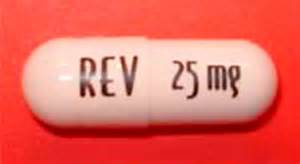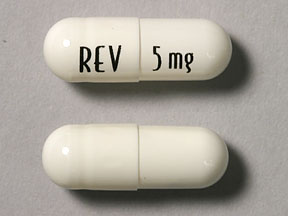
Recently Diagnosed or Relapsed? Stop Looking For a Miracle Cure, and Use Evidence-Based Therapies To Enhance Your Treatment and Prolong Your Remission
Multiple Myeloma an incurable disease, but I have spent the last 25 years in remission using a blend of conventional oncology and evidence-based nutrition, supplementation, and lifestyle therapies from peer-reviewed studies that your oncologist probably hasn't told you about.
Click the orange button to the right to learn more about what you can start doing today.
- You are here:
- Home »
- Blog »
- Multiple Myeloma »
- Revlimid / Lenalidomide Maintenance Therapy- Yes or No?
Revlimid / Lenalidomide Maintenance Therapy- Yes or No?

Low-dose Revlimid, Lenalidomide maintenance therapy (for MM) resulted in deeper remissions, longer PFS, longer OS yet caused a host of short, long-term and late stage side effects aka lower quality of life-
According to the study linked and excerpted below, the standard-of-care for newly diagnosed MM patients, maintenance Revlimid, Lenalidomide, helps you
- achieve deeper response to therapy,
- achieve a deeper remission and
- live longer-
Chances are however, you will feel the effects of being on chemotherapy if you undergo lenalidomide maintenance therapy. Let me explain.
Whether it is directed at me or simply asked in an online forum, one of the most common questions is about the benefit of maintenance Revlimid, Lenalidomide-
“my oncologist is recommending maintenance Revlimid for me…” what should I do?”
As per usual, the answer depends on many factors. In my experience, in order to figure out “what should I do?” you should understand the two basic issues below.
- Conventional oncology thinks about length of life first and foremost. Therefore, each and every newly diagnosed multiple myeloma (NDMM) patient must think about his/her quality vs. quantity of life. I realize this sounds trite, perhaps it even comes across as annoying advice.
- Conventional oncology usually prescribes potentially curative therapies. Please understand the cure vs. control debate
Complicating your thinking if you should undergo maintenance lenalidomide are the following issues:
If you have reached MRD, sCR, CR, VGPR from your induction therapy, research shows that maintenance lenalidomide will not result in a longer overall survival aka length of life.
Further:
- The older the NDMM patient is, the worse he/she will do on maintenance therapy- the risk of side effects is higher, the PFS and OS are shorter, on average.
- The study below doesn’t say anything other than the NDMM patients were just that- newly diagnosed. Nothing about age, stage (I,II,III), co-morbidities, etc. We have no way of knowing how this group compares to you-
- BEST CASE SCENARIO- please see the other study linked below. According to that study, a small percentage of NDMM patients live for more than 15 years. And even if the patient lives that long, they invariably experience a host of short, long-term and late stage side effects.
Consider the following to reduce the toxicity of any maintenance therapy you choose.
- Reduce the dose- if your oncologist considers 24 milligram, ask about 15, 10 or even 5 mg.
- Consider anti-angiogenic foods and/or supplements shown to enhance the efficacy of lenalidomide.
If you would like to learn more about evidence-based, non-toxic, non-conventional therapies scroll down the page, post a question or comment and I will reply to you ASAP.
Hang in there,
David Emerson
- MM Survivor
- MM Cancer Coach
- Director PeopleBeatingCancer
Recommended Reading:
- Multiple Myeloma- Frail Patients Benefit from Non-Toxic Therapies
- Multiple Myeloma Side Effect- Resolve Blood Clots (VTE)
- Multiple Myeloma- Frail Patients Benefit from Non-Toxic Therapies
Evaluation of the Clinical Efficacy and Prognosis of Long-Term Maintenance Lenalidomide Therapy in Patients with Multiple Myeloma
Objective: To investigate the clinical efficacy and prognosis of patients with multiple myeloma (MM) treated by long-term maintenance lenalidomide treatment…
After long-term maintenance Revlimid aka Lenalidomide treatment for patients with MM, the short-term and long-term clinical efficacy and the incidence of adverse reactions were evaluated, and factors affecting the prognosis of the patients were analyzed…
Results: Before maintenance treatment, 47.42% of the patients did not achieve complete remission (CR), among 52.58% (51/97) of CR patients, there were 20.62% of the patients showed minimal residual leukemia (MRD) negative.
After lenalidomide maintenance treatment, the patients who did not achieve CR were reduced to 24.74%
After maintenance treatment, the median progression-free survival (PFS) of the patients was 58 months, and the 5-year survival rate was 89.69%.
The incidence of adverse reactions was 40.21% (39/97), including
- neutropenia (31/39, 79.49%),
- fatigue (21/39, 53.85%),
- thrombocytopenia (17/39, 43.59%) and
- gastrointestinal reaction (15/39, 38.46%) were the most common.
The discontinuation rate was 24.74% (24/97), and the median time for discontinuation was 21 months. The main reasons for discontinuation were:
- neutropenia (12/24, 50.00%) ,
- thrombocytopenia (8/24, 33.33%) and
- gastrointestinal reactions accounted for 8.33% (2/24).
Old age and positive MRD were the risk factors affecting the prognosis of the patients. The adjusted OR was 1.43 (95% CI 1.03-1.76, P=0.034) and 3.78 (95% CI 2.56-9.56, P=0.037), respectively.
Conclusion: The long-term maintenance lenalidomide treatment shows a good clinical effect on patients with MM, and MRD detection can assist the cilinical judge the prognosis of the patients.
During maintenance treatment, the clinical symptoms, especially blood system damage of the patients should be take care, so as to avoid serious adverse reactions.”
Functional Cure, Defined As PFS of More Than 7 Years, Is Achieved in 9% of Myeloma Patients in the Era of Conventional Chemotherapy and of First-Generation Novel Anti-Myeloma Agents; A Single-Center Experience over 20-Year Period
“Between January 1994 and December 2010, 406 consecutive newly diagnosed MM patients received first line therapy in the Department of Clinical Therapeutics (Athens, Greece).
All patients had symptomatic disease, based on the IMWG criteria of that period (at least one CRAB symptom to start anti-myeloma therapy). Thirty-six (8.8%; 23M/13F) patients achieved a PFS of at least 7 years (long PFS group) after frontline treatment.
The median PFS of these 36 patients is 10 years, while the other patients had a median PFS of 22 months…
In conclusion, our study in an unselected group of patients, the majority of whom did not participate in clinical trials, showed that 9% of patients with newly diagnosed myeloma experience prolonged PFS of more than 7 years (median: 10 years) even in the era of CC or first-generation novel agents.
These patients have:
- low risk disease,
- mainly of ISS-1 or -2,
- no high-risk cytogenetics,
- no or mild renal impairment,
- and achieve deep responses after ASCT

